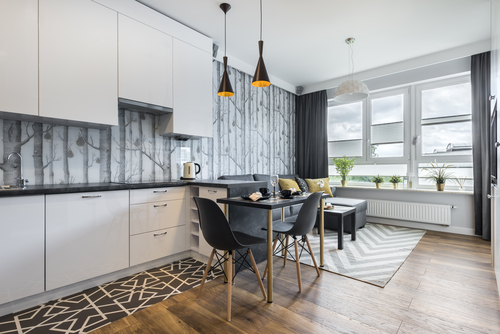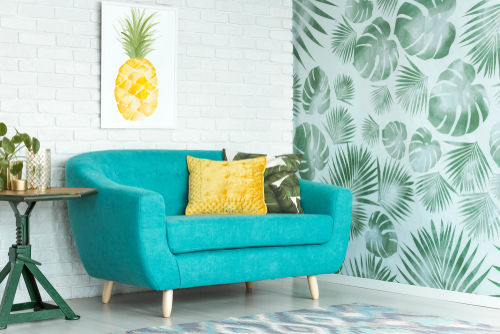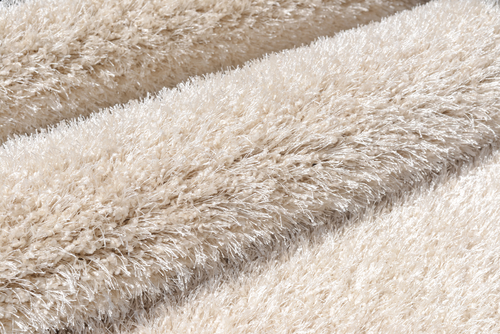
Finding Your Ideal Carpet For your Home
September 16, 2022
Can I Wash Home Wallpapers?
October 30, 2022Does Wallpaper Ruin Walls?
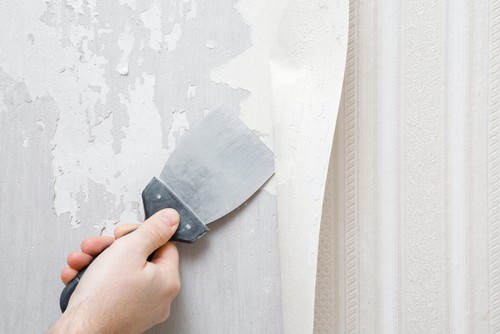
Does Wallpaper Ruin Walls? Wallpapers are instant glamour, a way to make a room more appealing and unique. From a practical point of view, wallpaper also protects walls from everyday wear and tear and offers soundproofing qualities.
However, issues arise when you get tired of your home wallpapers and want to switch things up to a new design or the old wallpaper is no longer in good condition. You may wonder whether taking off wallpaper will damage your walls. After all, the promise of easy installation was one of the main reasons you decided to go with wallpapers in the first place!
Table of Contents
Removal Of Wallpapers
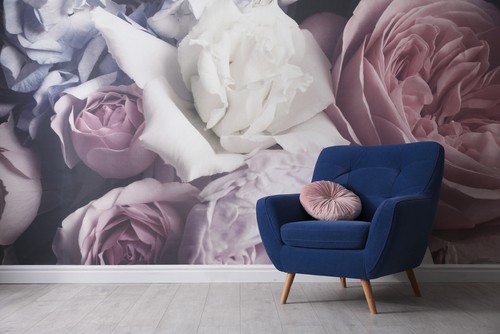
The good news is that, in most cases, wallpaper removal is possible without damaging your walls. However, certain types of wallpaper and installation methods can make the process more challenging, consequently increasing the risk of wall damage.
For example, if your wallpaper is glued directly to the drywall or plaster, some of the paper or glue will likely come off with the wallpaper, leaving behind a sticky residue. This can be difficult to remove and may require sanding or other preparatory work before you can repaint or apply the new wallpaper.
Removing existing wallpaper is also more difficult if it has been painted over or if multiple layers have been applied. In these cases, you may need to use a steamer to loosen the glue before carefully scraping off the wallpaper.
Overall, taking off wallpaper is generally not a complicated or time-consuming task, but taking the necessary precautions to avoid damaging your walls in the process is important. If you are unsure about your ability to remove wallpaper safely, it is always best to have a professional do the work.
How do you stop wallpaper from ruining your walls?
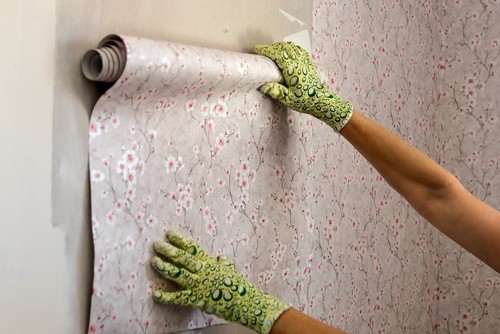
When applying wallpapers, preparing the surface is essential to avoid future issues. Therefore, you should:
- Start by cleaning the wall with a damp cloth to remove dirt or grease.
- Fill in cracks or holes with the joint compound and let it dry completely.
- Sand the wall to create a smooth surface for the wallpaper.
- Apply a layer of primer before finally applying the wallpaper adhesive.
- Make sure to follow the manufacturer’s instructions carefully when applying the adhesive.
- Hang the wallpaper and smooth it out as you go.
- Trim any excess wallpaper with a sharp knife.
- Finally, apply a sealant layer to protect the wallpaper and your walls.
Does Wallpaper Ruin Walls? Taking these precautions ensures that your wallpaper will not damage your walls and will stay in good condition. In case you ever need to remove it, the process will be much simpler and less damaging.
What type of wallpaper is best for walls?
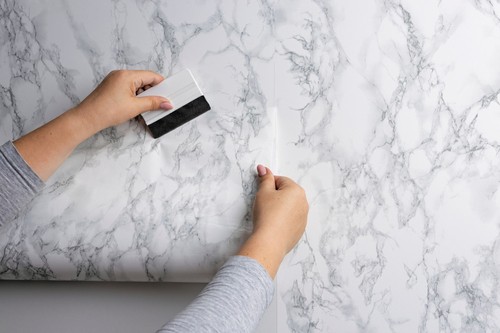
When choosing wallpaper for your home, there are many factors to consider, such as the type of material, design, and color. However, from a practical perspective, it is also important to consider the surface you will be applying the wallpaper.
For example, if you have textured walls, it is best to avoid wallpapers that are too thin or fragile as they are more likely to tear. Instead, opt for thicker, more durable wallpapers that can withstand the bumps and imperfections of a textured surface.
If you have smooth walls, on the other hand, you have more freedom to choose from a wide range of wallpaper materials, designs, and colors. However, it is still important to consider the level of traffic in the room as well as any potential risks, such as moisture or heat damage.
In general, vinyl wallpapers are a good option for high-traffic areas such as hallways and kitchens as they are durable and easy to clean. For areas that are more susceptible to damage, such as bathrooms or kitchens, you may want to choose a wallpaper that is specially designed for these rooms.
What are the disadvantages of wallpaper?
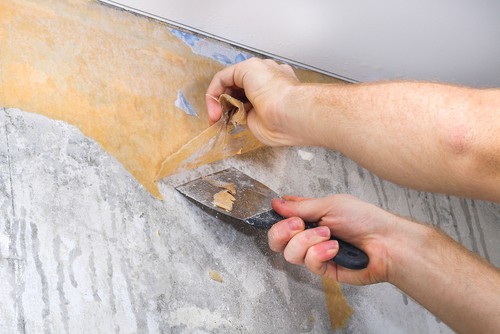
While wallpaper can be a beautiful and practical addition to your home, some potential disadvantages make them unsuitable for certain rooms or homes. Here are some of the main disadvantages of wallpaper:
- Wallpaper can be difficult to remove, especially if it has been glued directly to the wall or if it has been painted over.
- They are susceptible to damage from moisture, heat, and other elements.
- They can be difficult to match or repair if they are damaged.
- They can be costly to install, particularly if you hire a professional.
- They may not be suitable for all rooms in your home, such as bathrooms or kitchens.
As with any home improvement project, it is important to weigh the pros and cons of wallpaper before making a decision. In some cases, the disadvantages may outweigh the advantages, making it more suitable to choose another option, such as painting.
What is the best way to remove wallpaper?
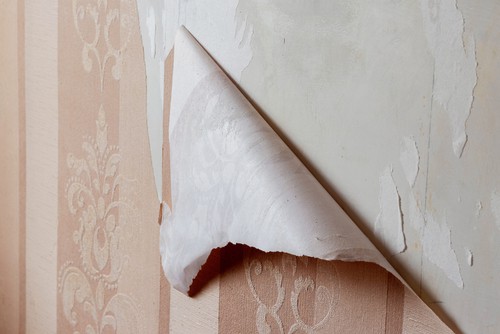
There are a few different ways to remove wallpaper, but the most important thing is to take your time and be careful not to ruin the walls.
1. Using a steamer
One of the easiest ways to remove wallpaper is by using a steamer. A steamer will soften the wallpaper glue, making it easier to peel off the paper. You can rent a steamer or purchase one at your local hardware store.
2. Use a chemical stripper.
This method is a bit more involved, but it will be very effective in removing the wallpaper. You will need to purchase a chemical stripper at your local hardware store and follow the instructions carefully. Remember to open the windows and doors while you are working to ventilate the area.
3. Use a putty knife.
If the other methods haven’t worked, you can try using a putty knife to scrape off the wallpaper. This will take some time and patience, but it is usually effective in getting the job done. The trick is to be careful not to damage the wall beneath the wallpaper.
4. Hire a professional.
If you don’t feel confident about removing the wallpaper yourself, you can always hire a professional to do it for you. This is usually the best option if you want to be sure that the job is done right, and it will save you a lot of time and hassle.
Does Wallpaper Ruin Walls? – Conclusion
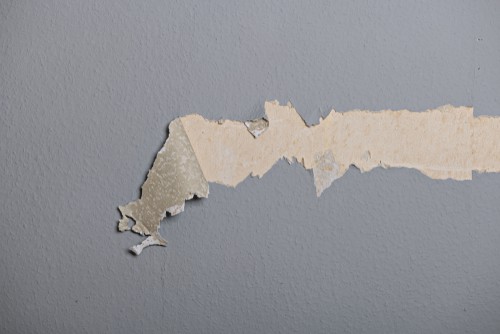
Wallpaper can be a beautiful and practical addition to your home, but there are some potential disadvantages that you should consider before making a decision. If you are concerned about the difficulty of removal or the potential for damage to the wall, you may want to choose another option, such as painting. Otherwise, wallpaper can be a great way to add personality and style to your home.

